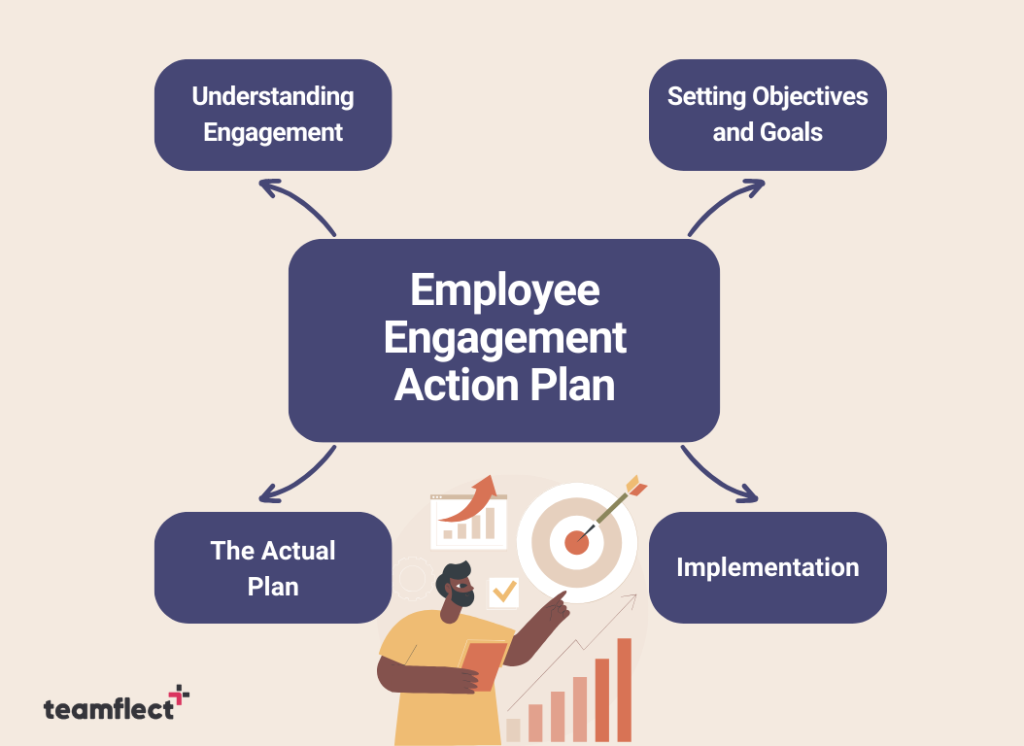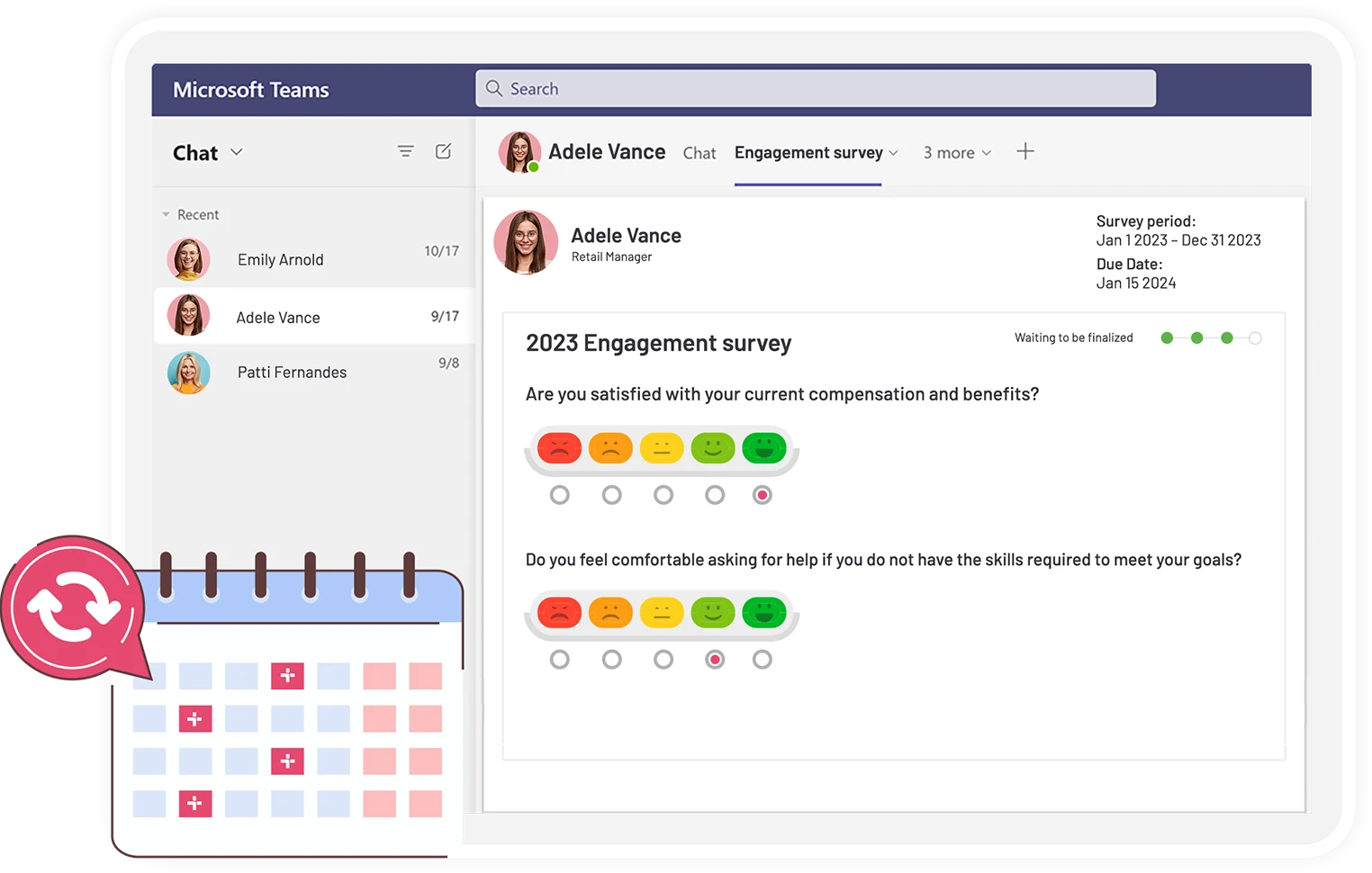Talking a big game about employee engagement is easy the real work begins when making an actual employee engagement action plan. Never worrying about having disengaged employees might be the dream. There are many different ways and employee engagement strategies to achieve that dream. In fact, we’ve listed some of the best employee engagement trends of 2024 in our blog before.
Today we are focused on how to make those strategies more achievable. That goes through creating successful employee engagement action plans. Creating the perfect employee engagement action plan can make the difference between your employee engagement strategies being a success or a failure.
What is the framework of an employee engagement action plan? Today, we find out! So without keeping you waiting any longer, let’s move forward to how you can create an employee engagement plan in 4 steps.
Table of Contents
4 Steps to Creating an Employee Engagement Action Plan

Step 1: Understanding Employee Engagement
In order to create a successful employee engagement action plan, it’s crucial to have a clear understanding of what exactly employee engagement means and what it entails. Here we have three very important components:
- Employee engagement surveys
- Feedback
- Data analysis
Employee Engagement Surveys
One of the easiest things you can do to figure that out is to conduct employee engagement surveys. This will give you an idea of what your employees love about their jobs and what they’d like to see improved.
Asking the right employee engagement survey questions can make the difference between a weak employee engagement action plan and a strong one! If you have an effective employee engagement survey tool at your disposal, you can conduct them in the form of pulse surveys. This lets you take quick and easy action.
Feedback
Another way to get a handle on employee engagement is to analyze feedback from your employees. This could be in the form of comments from performance reviews, exit interviews, or even just casual conversations you have with your team members. Pay attention to common themes that come up and use that information to help inform your action plan.
Data Analysis
Once you’ve got a good sense of what’s going on with your employees, it’s time to get introspective and analytical! You need to dive deeper and identify the root causes of low engagement. Maybe it’s because people feel like they’re not being challenged enough, or maybe they’re feeling overwhelmed and overworked.
Regardless of the cause, getting to the bottom of it will be key to fixing the problem. If your employee feedback and engagement survey solutions can convert their existing data into reports that give you some actual insight, this process is made a whole lot easier!
The Tools You Need

This post wouldn’t be very helpful if we didn’t offer you an actual solution to go with these suggestions. If you are an organization that uses Microsoft Teams on a daily basis, one of the best solutions you can use is Teamflect!
Teamflect is an all-in-one performance management software that you can integrate into Microsoft Teams, providing you with employee engagement survey questions at the ready, an impeccable 360-degree feedback module, and Power BI reports that give you helpful insights.



